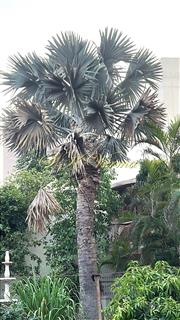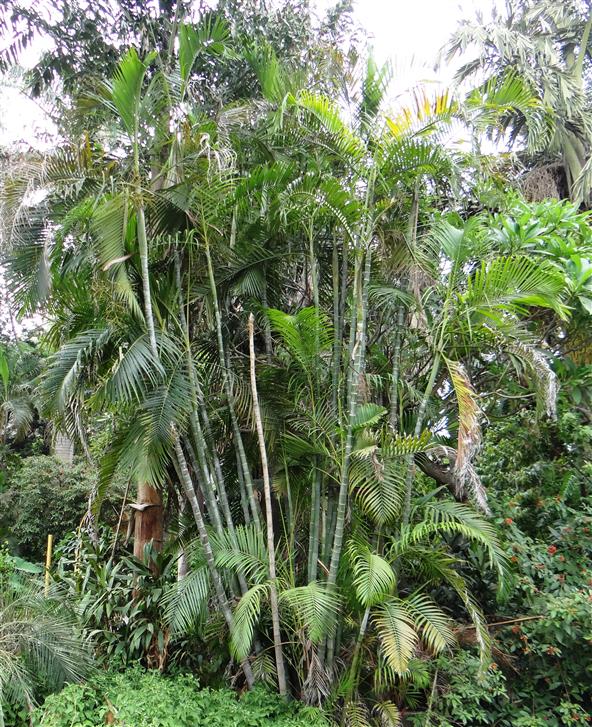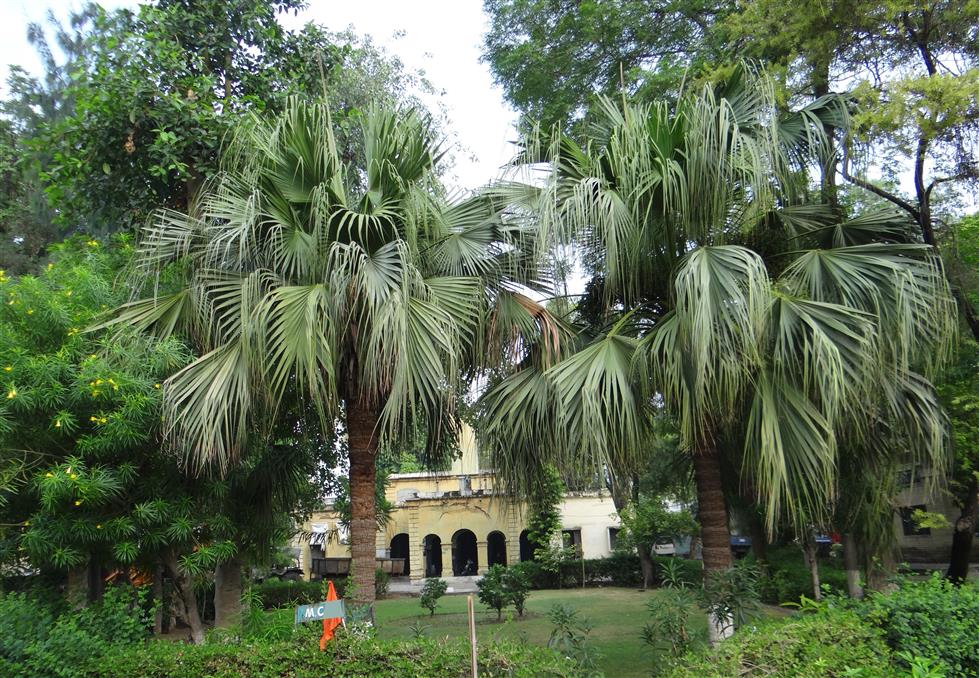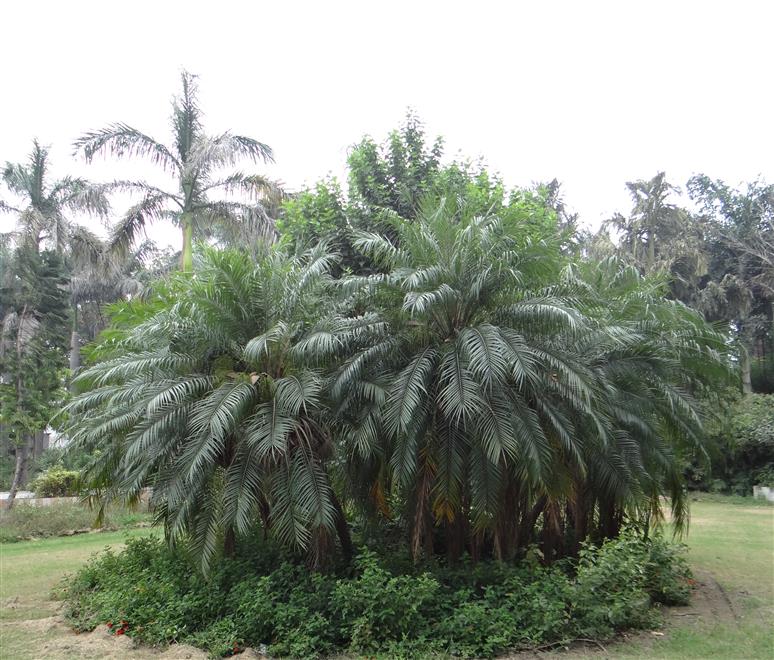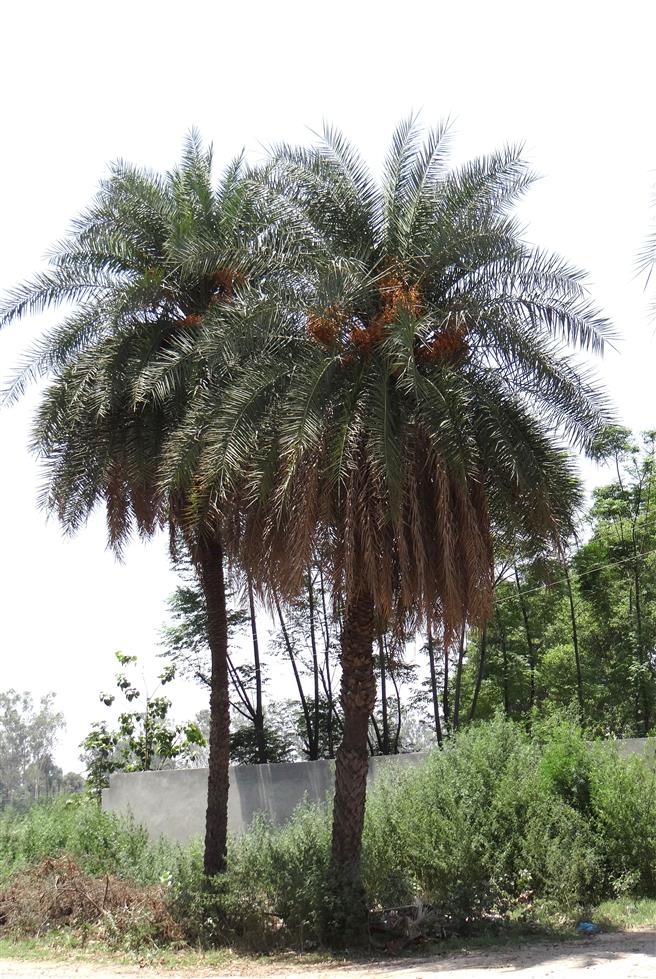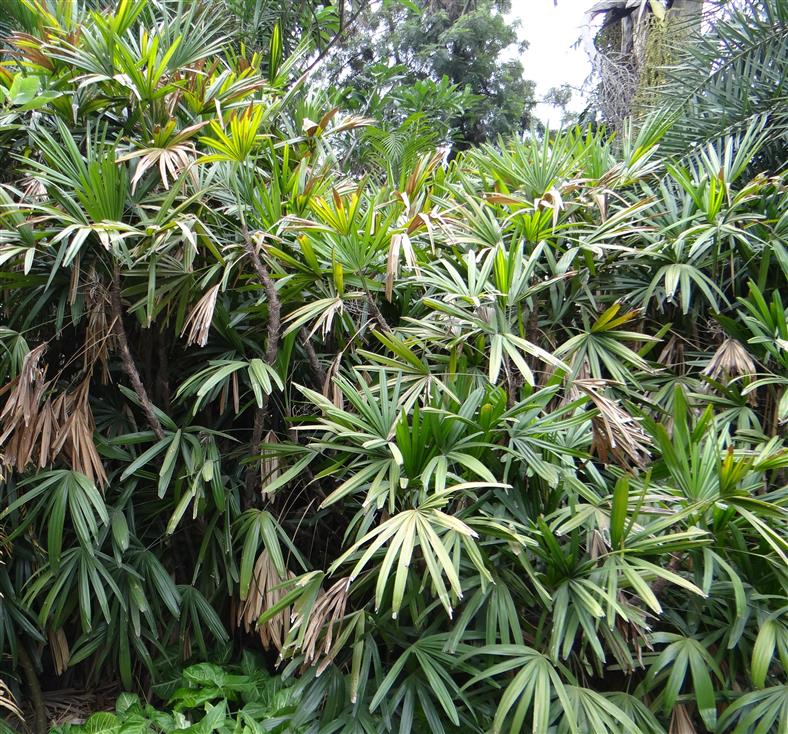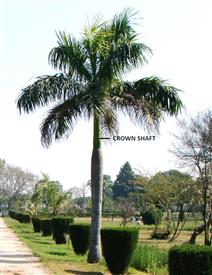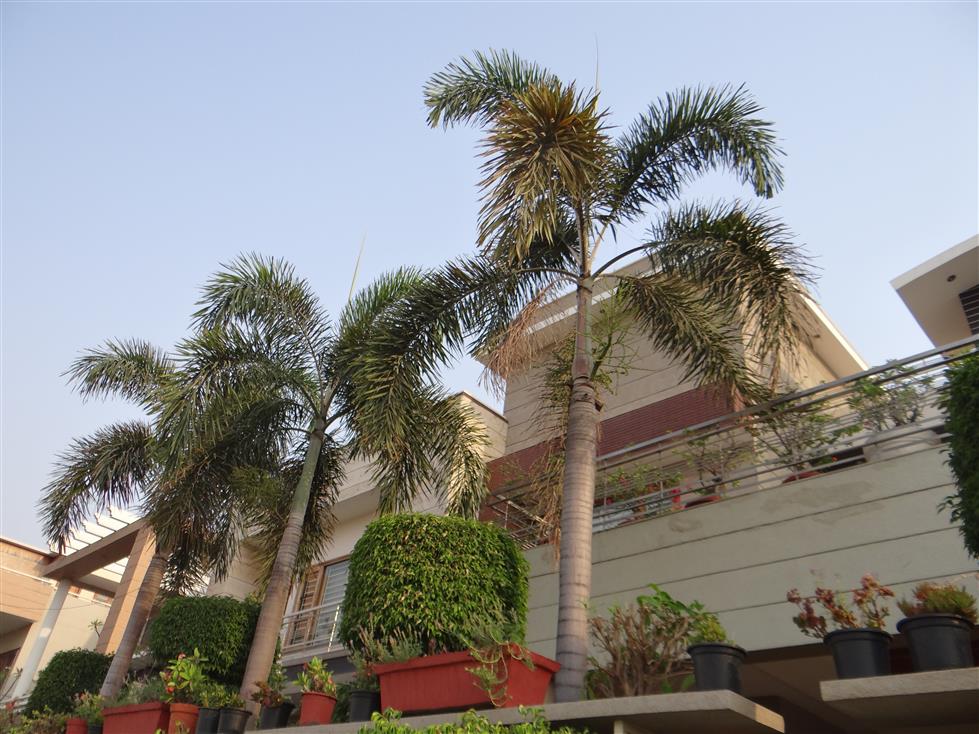ARECACEAE OR PALMAE
Monoecious, dioecious and rarely hermaphroditic trees, shrubs or vines. Stem short and subterranean rhizome or commonly above ground. Above ground stem erect or climbing, solitary or clustered, commonly unbranched or sometimes bearing side branches, rarely forked or profusely branched; trunk smooth, ringed or covered with remains of leaf bases and dead leaves. Roots adventitious, thick. Leaves spirally arranged, rarely di- or tristichous; sheaths tubular, open or closed, together forming crown shafts at apex of stem; petioles terete, channelled or ridged, unarmed, sometimes bearing prickles or marginal teeth. Leaf blade palmate, costa palmate (intermediate between palmate and pinnate) or 1-2-pinnate; plications (foldings lengthwise into plates or furrows) v- shaped (induplicate) or ^- shaped or tent-shaped (reduplicate); segments or leaflets lanceolate, linear or cuneate, glabrous or variously scaly, unarmed or armed bearing prickles or sometimes proximal segments modified into spines (as in Phoenix); in climbing plants, usually with knees (a swollen area on the sheath below petiole). Inflorescence from solitary or clustered axillary buds borne within, below or above the crown of leaves, usually paniculate, branched to 5 orders, enclosed by one or more bracts in bud condition. Bracts coriaceous or membranous, sometimes sheathing the lateral branches of the inflorescence. Flowers small, actinomorphic, usually sessile, sometimes subsessile or pedicelled. Perianth of 6 segments, biseriate or uniseriate. Calyx and corolla usually 3-lobed, free or united; sepals generally imbricate or open in bud; petals generally valvate in the male and imbricate in the female flower. Stamens usually 6, sometimes 3, 9 or numerous; anthers bithecous, dehiscing by vertical slits; filaments free, usually short. Carpels usually (1-)3(-more), free or variously united, rudimentary or absent in male flowers, ovary superior, 1-3-locular or rarely 4-10-locular, having a single ovule in each locule; ovule basal, axile or pendulous. Fruit usually a berry or drupe; epicarp smooth, tubercled, prickly or scaly; mesocarp often fibrous; endocarp often present, thick and woody. Seeds with a small embryo and a large homogeneous or ruminate endosperm.
182 genera and about 2600 species
